Wir benötigen Ihre Einwilligung zur Verwendung der einzelnen Daten, damit Sie unter anderem Informationen zu Ihren Interessen einsehen können. Klicken Sie auf "OK", um Ihre Zustimmung zu erteilen.
ASTM F1977-04(2010)
Standard Test Method for Determining Initial, Fractional, Filtration Efficiency of a Vacuum Cleaner System
Automatische name übersetzung:
Standard Test Methode zur Bestimmung der Erste, fraktionierte, Filtrationseffizienz eines Staubsauger-System
NORM herausgegeben am 1.4.2010
Informationen über die Norm:
Bezeichnung normen: ASTM F1977-04(2010)
Anmerkung: UNGÜLTIG
Ausgabedatum normen: 1.4.2010
SKU: NS-52316
Zahl der Seiten: 17
Gewicht ca.: 51 g (0.11 Pfund)
Land: Amerikanische technische Norm
Kategorie: Technische Normen ASTM
Kategorie - ähnliche Normen:
Die Annotation des Normtextes ASTM F1977-04(2010) :
Keywords:
efficiency, filtration, vacuum cleaner, Particle counters/counting, Vacuum cleaners/systems, Efficiency, Filtration, Fractional filtration effeciency (FFE), ICS Number Code 97.080 (Cleaning appliances)
Ergänzende Informationen
| Significance and Use | ||||||||||||
|
It is well known that modern electrical appliances, incorporating electric motors that use carbon brushes for commutation, may emit aerosolized, particles into the surrounding environment. This test method determines the initial, fractional, filtration efficiency of a vacuum cleaner system, taking those emissions into consideration. For all vacuum cleaner systems tested, the total emissions of the unit, whatever the source(s), will be counted at each of the six particle size levels identified in the test procedure. This test method determines the initial, fractional filtration efficiency of a vacuum cleaner system, with or without the motor emissions mathematically removed in the calculation of efficiency. |
||||||||||||
| 1. Scope | ||||||||||||
|
1.1 This test method may be used to determine the initial, fractional, filtration efficiency of household and commercial canister (tank-type), stick, hand-held, upright, and utility vacuum cleaner systems. 1.1.1 Water-filtration vacuum cleaners which do not utilize a replaceable dry media filter located between the water-based filter and cleaning air exhaust are not included in this test method. It has been determined that the exhaust of these vacuum cleaners is not compatible with the specified discrete particle counter (DPC) procedure. 1.2 The initial, fractional, filtration efficiencies of the entire vacuum cleaner system, at six discrete particle sizes (0.3, 0.5, 0.7, 1.0, 2.0, and >3 μm), is derived by counting upstream challenge particles and the constituent of downstream particles while the vacuum cleaner system is being operated in a stationary test condition. 1.3 The vacuum cleaner system is tested at the nozzle with the normal airflow rate produced by restricting the inlet to the nozzle adapter with the 1¼ -in. orifice. 1.4 The vacuum cleaner system is tested with a new filter(s) installed, and with no preliminary dust loading. The fractional efficiencies determined by this test method shall be considered initial system filtration efficiencies. The filters are not changed between test runs on the same cleaner. 1.5 Neutralized potassium chloride (KCl) is used as the challenge media in this test method. 1.6 One or two particle counters may be used to satisfy the requirements of this test method. If using one counter, flow control is required to switch between sampling the upstream and downstream air sampling probes. 1.7 To efficiently utilize this test method, automated test equipment and computer automation is recommended. 1.8 Different sampling parameters, flow rates, and so forth, for the specific applications of the equipment and test procedure may provide equivalent results. It is beyond the scope of this test method to define those various possibilities. 1.9 This test method is limited to the test apparatus, or its equivalent, as described in this document. 1.10 This test method is not intended or designed to provide any measure of the health effects or medical aspects of vacuum cleaning. 1.11 This test method is not intended or designed to determine the integrity of HEPA filtration assemblies used in vacuum cleaner systems employed in nuclear and defense facilities. 1.12 The inch-pound system of units is used in this test method, except for the common usage of the micrometer, μm, for the description of particle size which is a SI unit. 1.13 This standard does not purport to address all of the safety concerns, if any, associated with its use. It is the responsibility of the user of this standard to establish appropriate safety and health practices and determine the applicability of regulatory limitations prior to use. |
||||||||||||
| 2. Referenced Documents | ||||||||||||
|
Ähnliche Normen:
Historisch
1.11.2011
Historisch
1.11.2011
Historisch
1.11.2011
Historisch
1.12.2013
Historisch
1.9.2010
Historisch
1.9.2010
Empfehlungen:
Aktualisierung der technischen Normen
Wollen Sie sich sicher sein, dass Sie nur die gültigen technischen Normen verwenden?
Wir bieten Ihnen eine Lösung, die Ihnen eine Monatsübersicht über die Aktualität der von Ihnen angewandten Normen sicher stellt.
Brauchen Sie mehr Informationen? Sehen Sie sich diese Seite an.


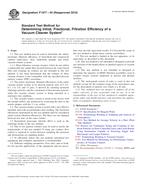
 ASTM F1601-01(2011)..
ASTM F1601-01(2011)..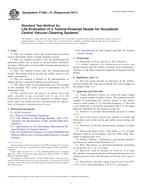 ASTM F1692-01(2011)..
ASTM F1692-01(2011).. ASTM F2105-11
ASTM F2105-11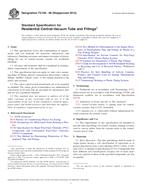 ASTM F2158-08(2013)..
ASTM F2158-08(2013)..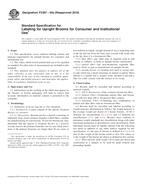 ASTM F2367-04a(2010)..
ASTM F2367-04a(2010)..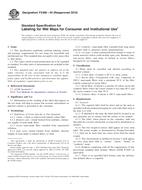 ASTM F2368-04(2010)..
ASTM F2368-04(2010)..
 Cookies
Cookies
